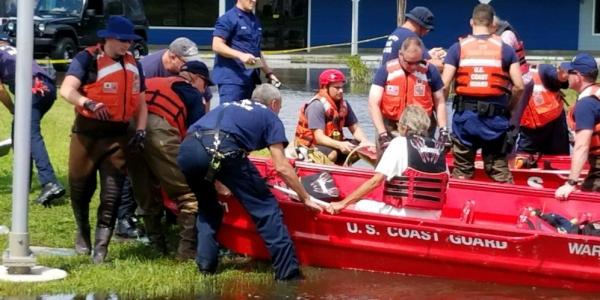Homeland Security's Changing Culture Embraces Innovation
Three major hurricanes pummeled the United States this year, occurring nearly concurrently and causing massive damage in multiple states and in the Virgin Islands and Puerto Rico. The conditions created by these overlapping disasters were extreme, with disparate needs and changing operational requirements often thwarting response capabilities. Facing unprecedented challenges during and after these storms, the U.S. Department of Homeland Security relied on traditional as well as innovative approaches to serve the affected communities.
“Emergency decisions have to be made at the speed of thought,” explained Andre Hentz, the department’s acting deputy undersecretary for science and technology. Data simulation and predictive analytics are “a natural” in such scenarios, he said, and technologies based on social platforms add insight. Hentz gave his remarks at September’s AFCEA Homeland Security Conference in Washington, D.C.
Innovative approaches, such as using TV towers when cell towers are damaged or sending rescue teams to assist based on Facebook posts, are continued goals. The Google Street app helped with search and rescue efforts during the storms, and new apps will expand that value. The Coast Guard is exploring Uber or Waze-type platforms that might be built to expedite communications and rescues in disasters. Wearable technologies could help both the first responders involved with the unpredictability of disaster relief as well as the government inspectors going about mundane duties.
The ability to be agile and flexible, in this case for hurricane response, has seen much improvement in the three years since the department’s unity of effort initiative began. The initiative’s focus is on better integration of operational, managerial, acquisition and organizational structures as a means to address the diverse and numerous challenges the nation faces. Along with looking inward at areas for improvement, the agency seeks more industry engagement, ranging from solutions to processes and timelines.
The Department of Homeland Security (DHS) Science and Technology Directorate’s Silicon Valley Innovation Program, for example, is working to bring technology from startup companies into the field quickly. The program reduces contracting decision time frames from more than 18 months to one day for companies that are accepted to the program. Many of these small companies did not plan on contracting with the government because of its slow and onerous processes, although they are building technology of great value to the DHS.
Conference speakers, whether from industry or government, emphasized the growing culture of inclusion and transparency evolving from the unity effort. This culture is becoming embedded in everything the DHS does, from providing sensors for flood control to developing technology for virtual borders to implementing immigration policies to improving acquisition and procurement efforts. DHS agencies are working collaboratively across what traditionally were stovepipes to develop the right requirements that result in the correct equipment and services being delivered at affordable prices. “Great thinking is going on in procurement, but more importantly, agencies are coming together in business solutions,” stated Soraya Correa, the department’s chief procurement officer, during a panel at the conference.
“The trend is transparency with industry,” added Diane Sahakian, deputy assistant commissioner, Office of Acquisition, U.S. Customs and Border Protection. That is why industry is seeing so many requests for information (RFIs), she explained. Bill Weinberg, director, Office of Acquisition Management, U.S. Immigration and Customs Enforcement, emphasized that his agency makes a genuine effort to work with the requirements people to use the input that comes from the RFI process.
Meanwhile, the DHS is struggling, like many other agencies, to address cyber concerns. Some of its challenges stem from classification issues that delay its ability to hire the needed cyber work force. To implement efficient programs, classification practices must be expedited so that more information can be shared and applied, but part of that involves developing trust between industry and government.
Trust is an important part of solving cybersecurity problems, but trust between government and the private sector is just not there. “We must inject private-sector thought and technology into all that government does. There has to be a convergence of a host of different skills,” stated Phyllis Schneck, managing director and global leader of cyber solutions for Promontory Financial Group. An antiquated infrastructure exists on the federal side, and while collaboration among the agency cohorts has improved, in many areas older information technology systems still are stovepiped at the DHS, delaying progress in some cases.
Machine learning could be part of the solution. However, it is not intended to replace people, Schneck explained. Its value is in allowing people to use their expertise to solve bigger problems.
For additional conference coverage, go to event.afcea.org/Homeland17archive.






Comments